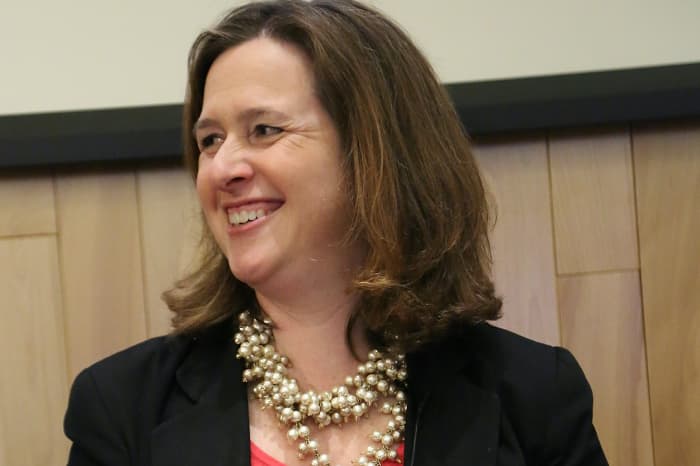This post was originally published on this site
The hunger isn’t only in the belly. It’s also in the heart.
We keep learning fresh lessons from COVID. Patience. Compassion. The magic of vaccination. The perils that threaten science every day. And here’s another of COVID’s many hard-learned truths.
People need food to survive. But to live, they also need us.
They need us to break the grinding isolation of the past 18 months. Older people, especially.
“I’ve seen it in my own family,” Beth Shapiro said. “My parents are 92 and 86. My mom kept saying to me, ‘You’re not going to recognize us when you see us. You just won’t recognize us. We’ve aged so much.’ And I was like, ‘Yeah, yeah.’”
But in March, when Shapiro finally came face-to-face with her mother and father after more than a year of pandemic lockdown, she couldn’t help but be startled. “My mom was right. Not so much her, but my dad. The change has been drastic. I had seen meal recipients in that time. I had delivered meals to people. But to see my own parents and how they had aged, it was heart wrenching and also enlightening. There it was again, the realization of how being alone impacts people so deeply…emotionally and physically.”
More New York news: Meeting vaccine hesitancy, one calm answer at a time
Beth Shapiro is in a unique position to know. She runs Citymeals on Wheels, the nonprofit that delivers nourishment to older New Yorkers who can’t get out. The group goes back to 1981, when food writer Gael Greene and chef James Beard came to realize that lots of city seniors needed something more than the city government’s meal delivery program. Part of the problem was the city vans didn’t operate on the weekends. But what was really missing was something else: A personal check-in. Some slower-paced human contact. A few friendly words from the nice person stopping by with the food. Loneliness and isolation, the writer and the chef were convinced—those were two of the heaviest burdens of getting old.

Beth Shapiro runs Citymeals on Wheels in New York City.
Getty Images
Today, Citymeals has 20,000 volunteers, 500 kitchen and logistics staffers, plus another 60 in the office and in an emergency meal distribution center in the Bronx. The money comes from private donations and public sources. Shapiro has been in charge since September 2011.
“In a typical year,” she said, “we deliver 2.1, maybe 2.2 million meals. From March 2020 until June 2021, we did 4 million, almost double. Previously, our rolls were about 18,000 older New Yorkers. At the height of the pandemic, we were feeding 50,000. I think that speaks to the scale.”
Related: Lonely seniors may die 5 years early
As COVID raged, many older folks were stuck inside their apartments. Scared. Fragile. Unable to shop for themselves. Disconnected from neighbors, friends and family and, in some cases, supplemental income.
And now, with the advancing roar of COVID’s delta variant, are the numbers about to shoot up again? The latest signs say, “Quite possibly.”
“We did not miss a single delivery,” Shapiro said. “But we had to adjust. You weren’t walking in and handing the person a meal. You were knocking on the door. You were hanging the meal in a bag on the doorknob and stepping back. The people were still able to see you, but some of that connection was challenged.” And in the group’s Friendly Visiting program, which pairs a meal recipient with a volunteer, those volunteers typically used to visit every week. But that had to be scaled down to wellness phone calls during the height of the pandemic.
Also see: U.S. is averaging more than 1,000 COVID-19 deaths a day for first time since March
Some of these restrictions have eased a bit over the summer. The handoffs have gotten more personal again.
“It’s still masks on and keeping a distance,” Shapiro said. “But these contacts are so important.” And with the delta variant hovering, no one can say for certain what’s coming next. “Certainly, the fear and the isolation are still there for our meal recipients. Some of that same hesitation. The fear of going out. The desire to get vaccinated but the lack of understanding or access to vaccines. Questions about how people are going to take care of themselves. If you’re older and you’re not vaccinated, people are scared to come in.”
And there’s always the challenge of recruiting fresh volunteers.
“There’s been a shift,” Shapiro said. “We’ve seen more individual volunteers coming out to help. But as you’d expect, we’ve also seen fewer and fewer corporate and community groups. There’s been a real drop. People still aren’t in their offices doing business. That has to return. We need to find a way to get all those people back. Like we’re always saying, ‘It’s the meal and the delivery.’”
Ellis Henican is an author based in New York City and a former newspaper columnist.

